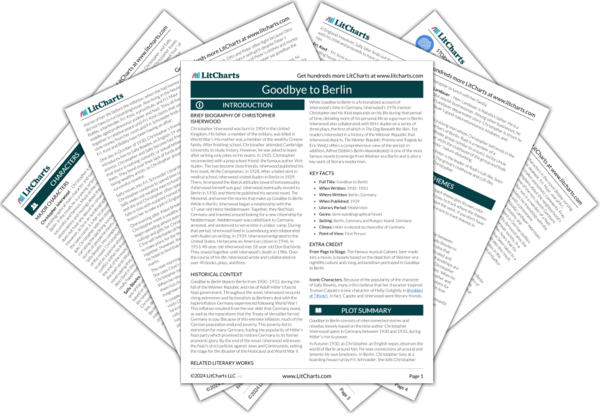Flags symbolize the rampant factionalism and rising extremism that Christopher witnesses in Berlin during the early 1930s. Throughout the novel, Christopher recounts the rise of Nazism in public life. During his time on Ruegen Island, for instance, he walks on the crowded beach to see that beachgoers have marked their chairs with the flags of their city or political affiliation (including the Nazi flag). The need of these beachgoers to show their alliances to others, whether or not they are Nazi party members, speaks to the factionalism present in pre-World War II Germany, which divided the public and fueled rising extremism that led to the war.
Flags Quotes in Goodbye to Berlin
The other morning I saw a child of about five years old, stark naked, marching along all by himself with a swastika flag over his shoulder and singing “Deutschland über alles.”










